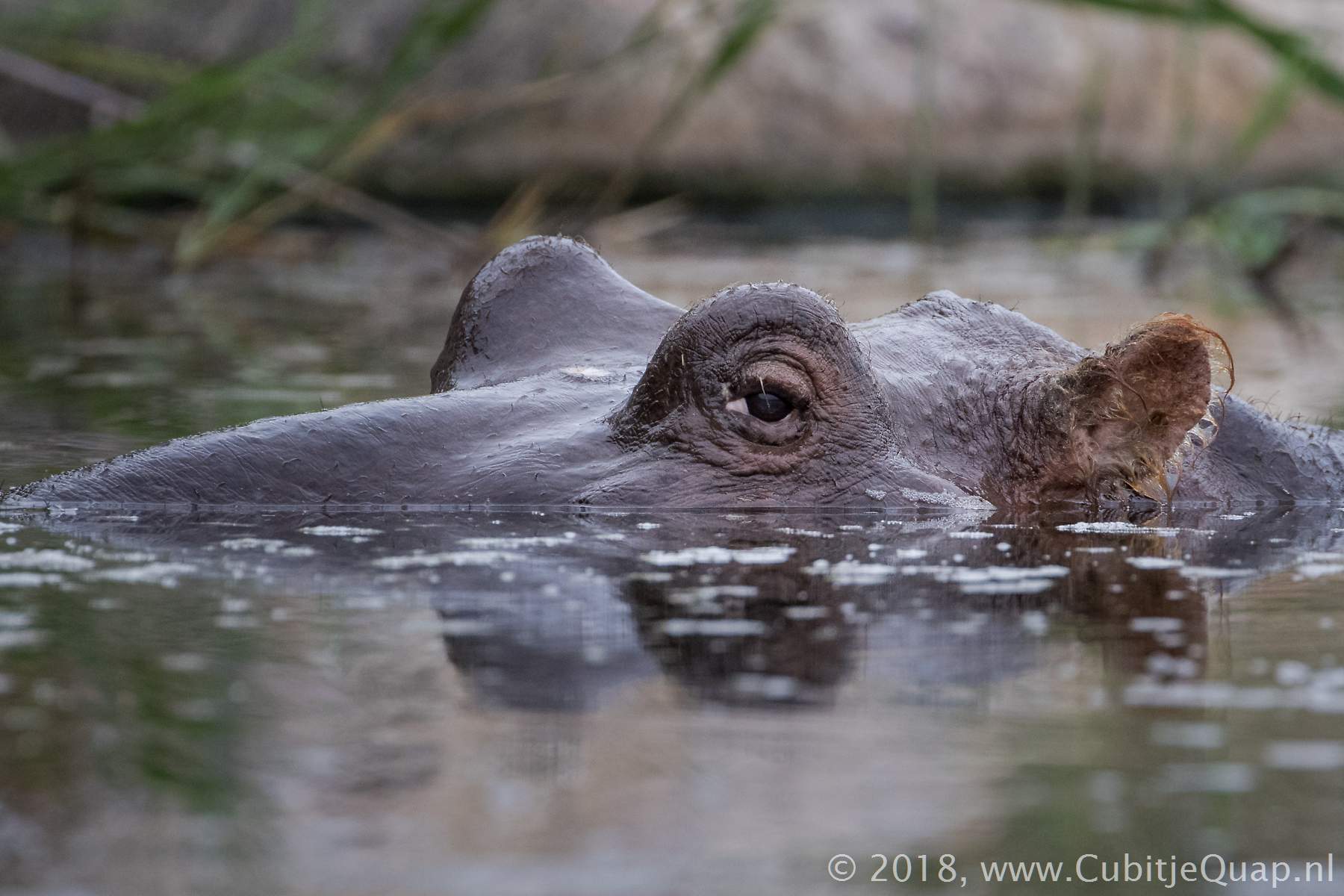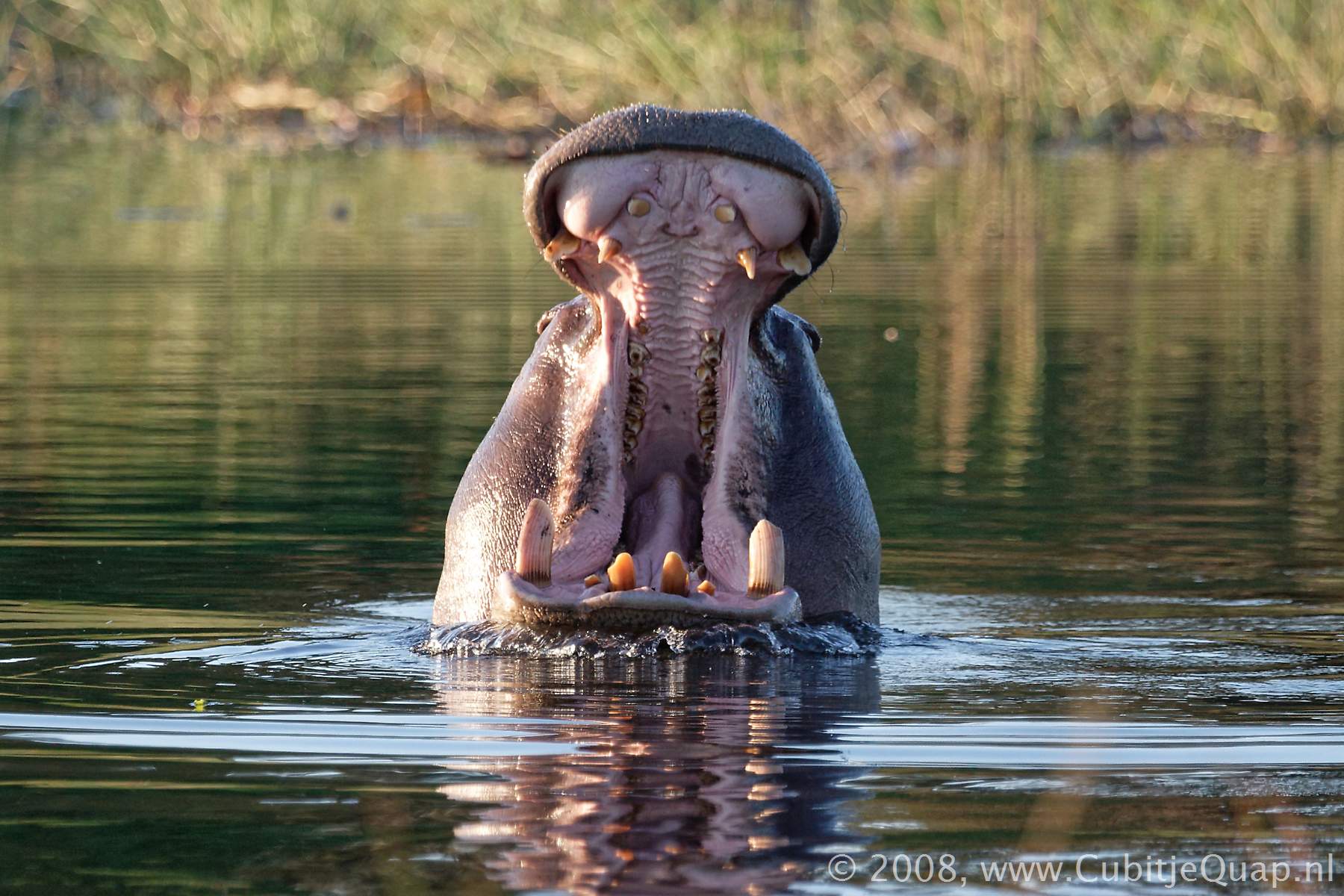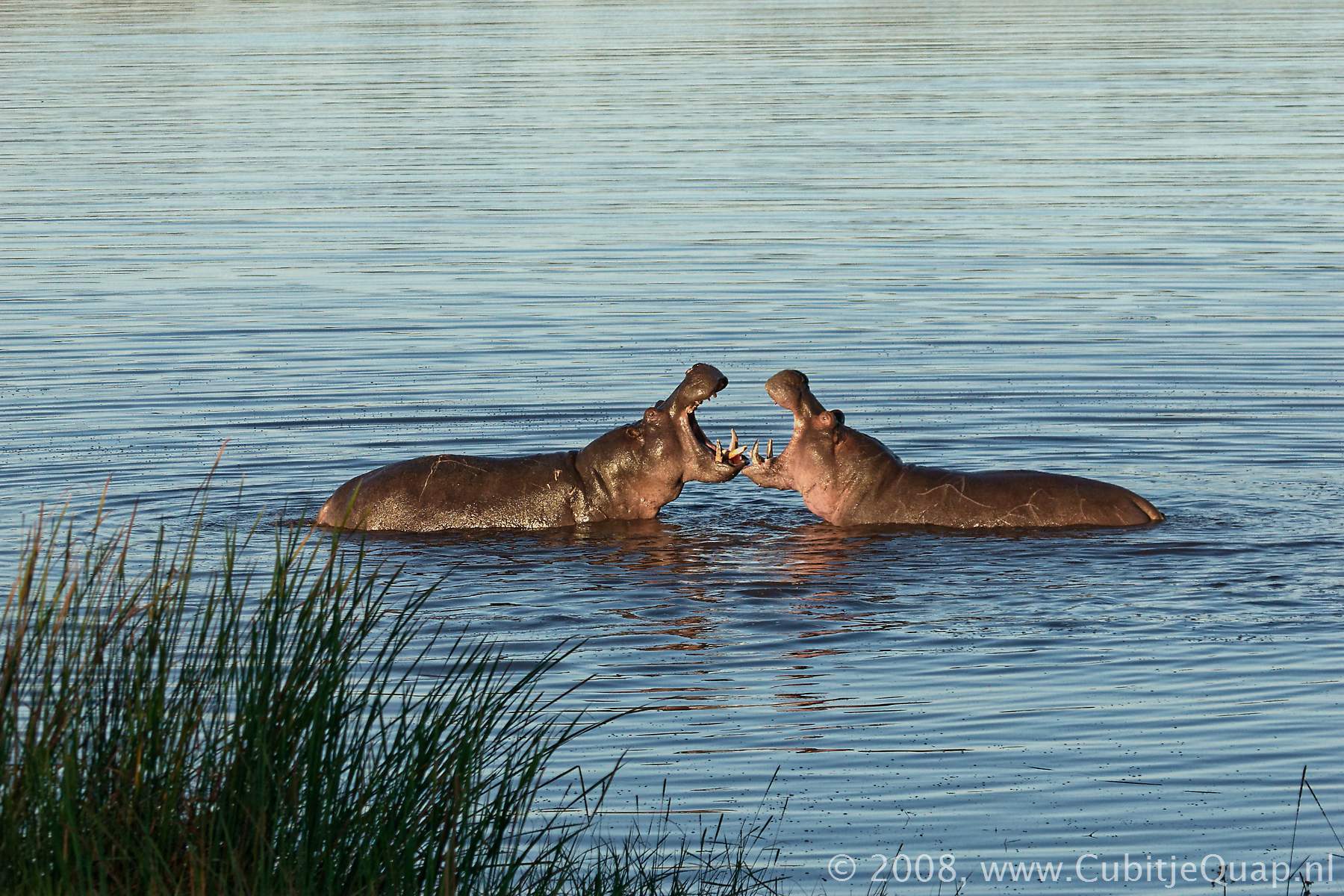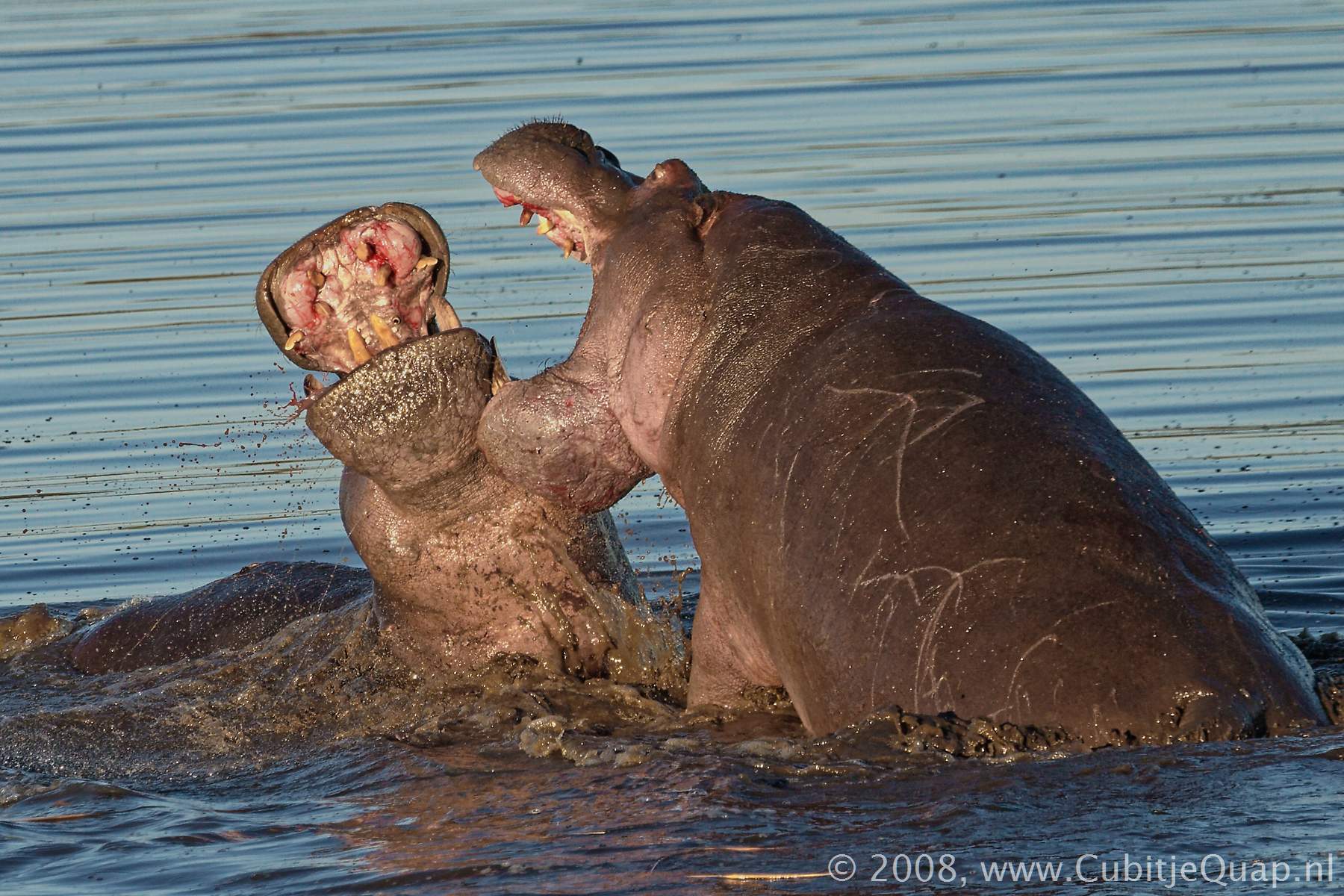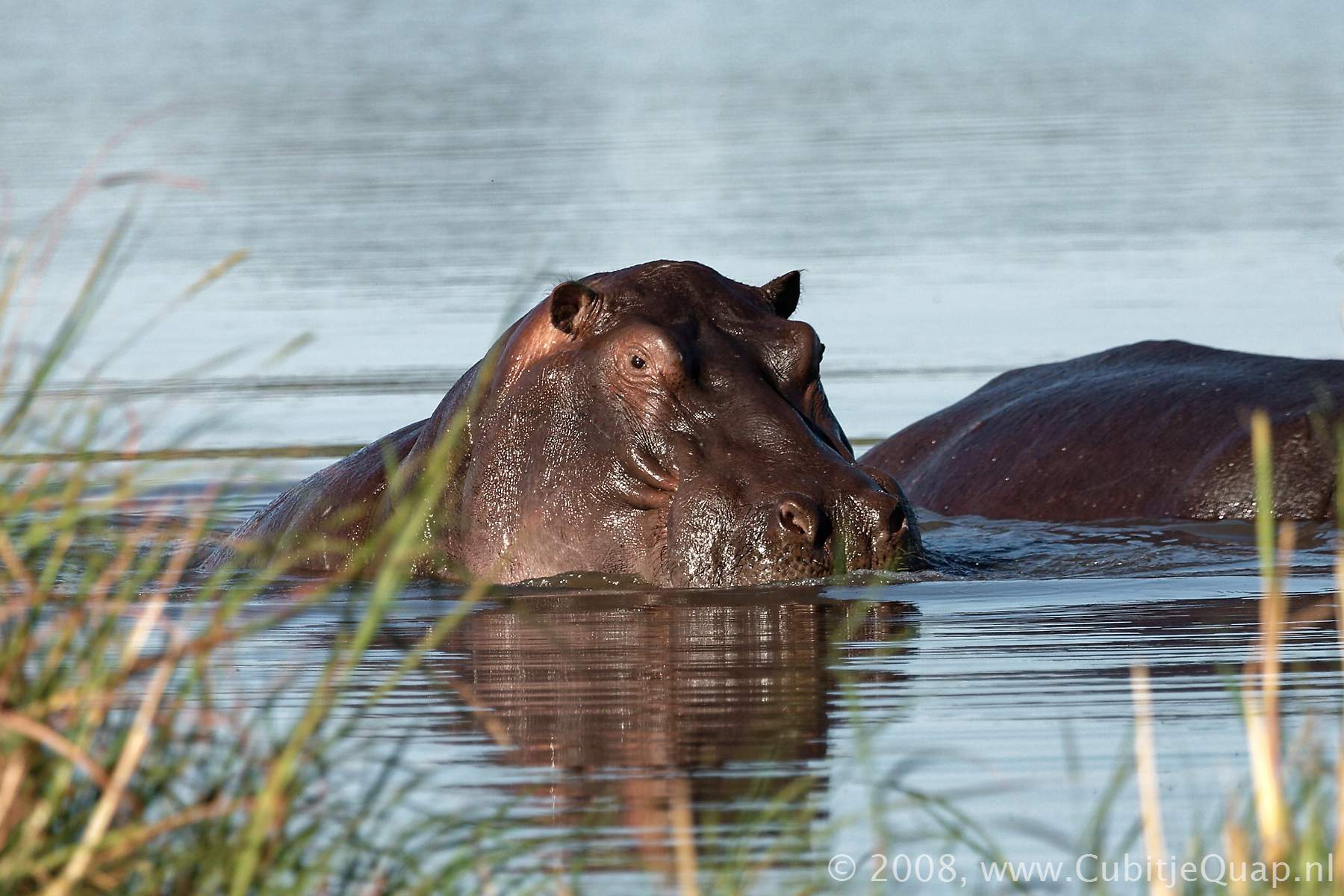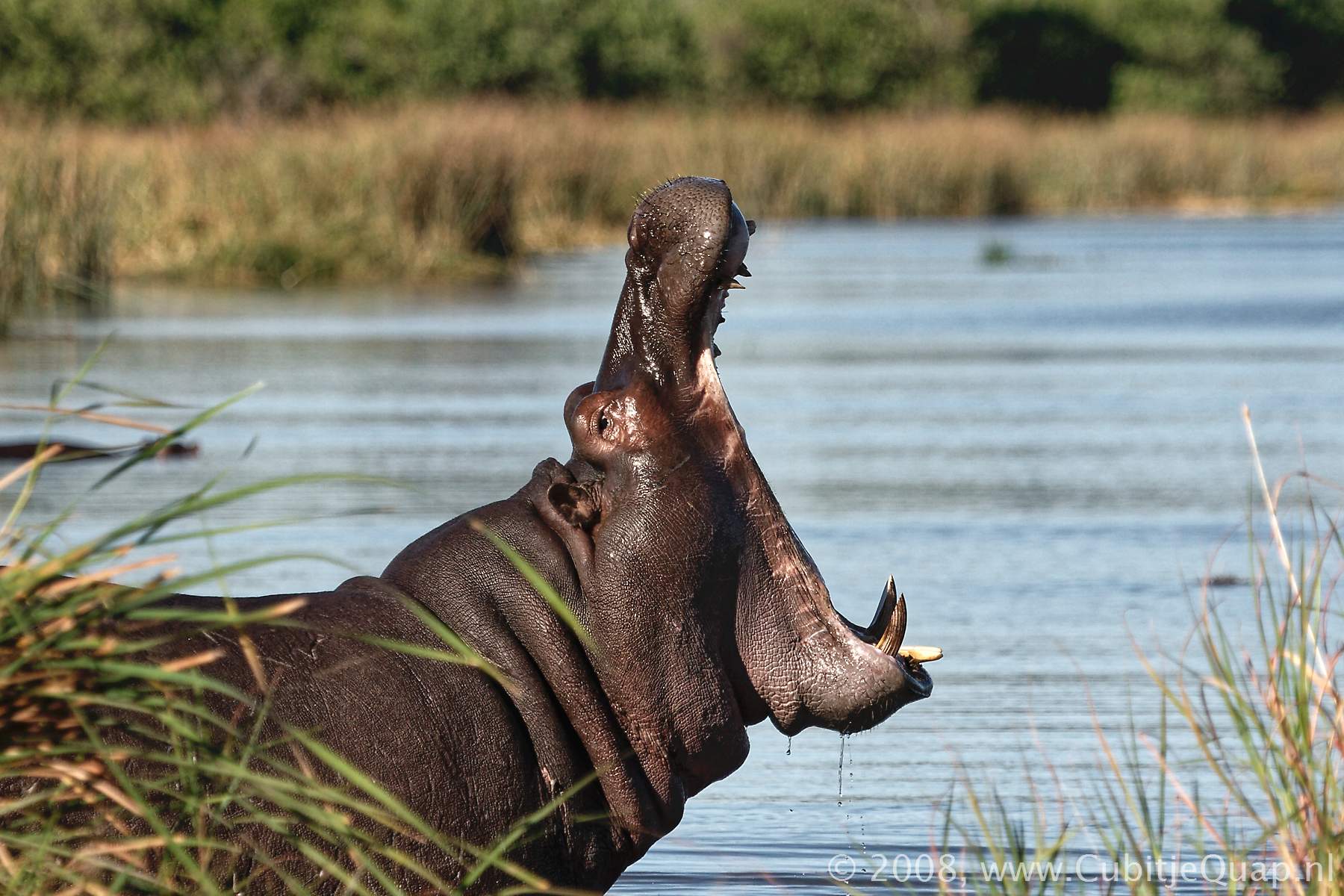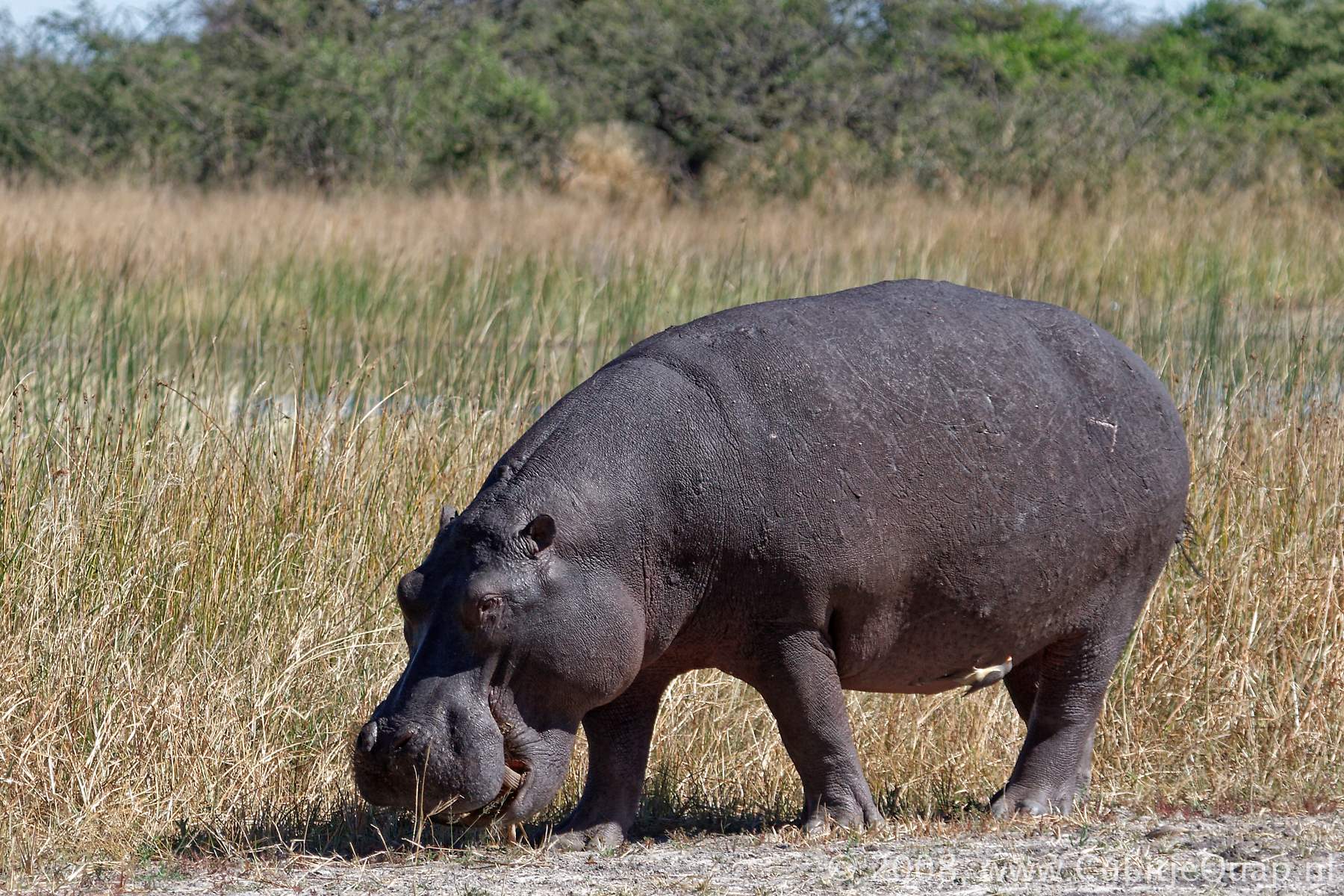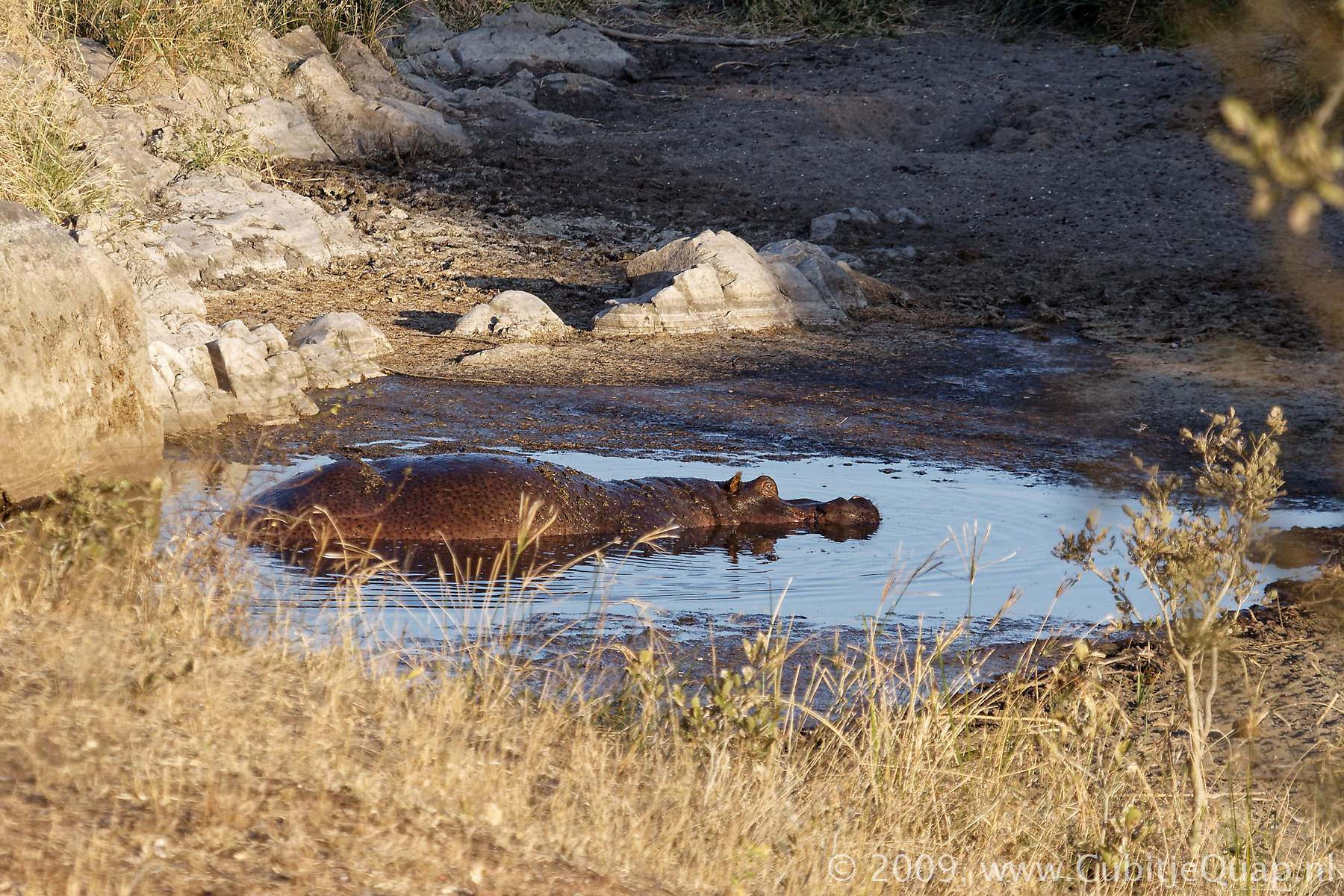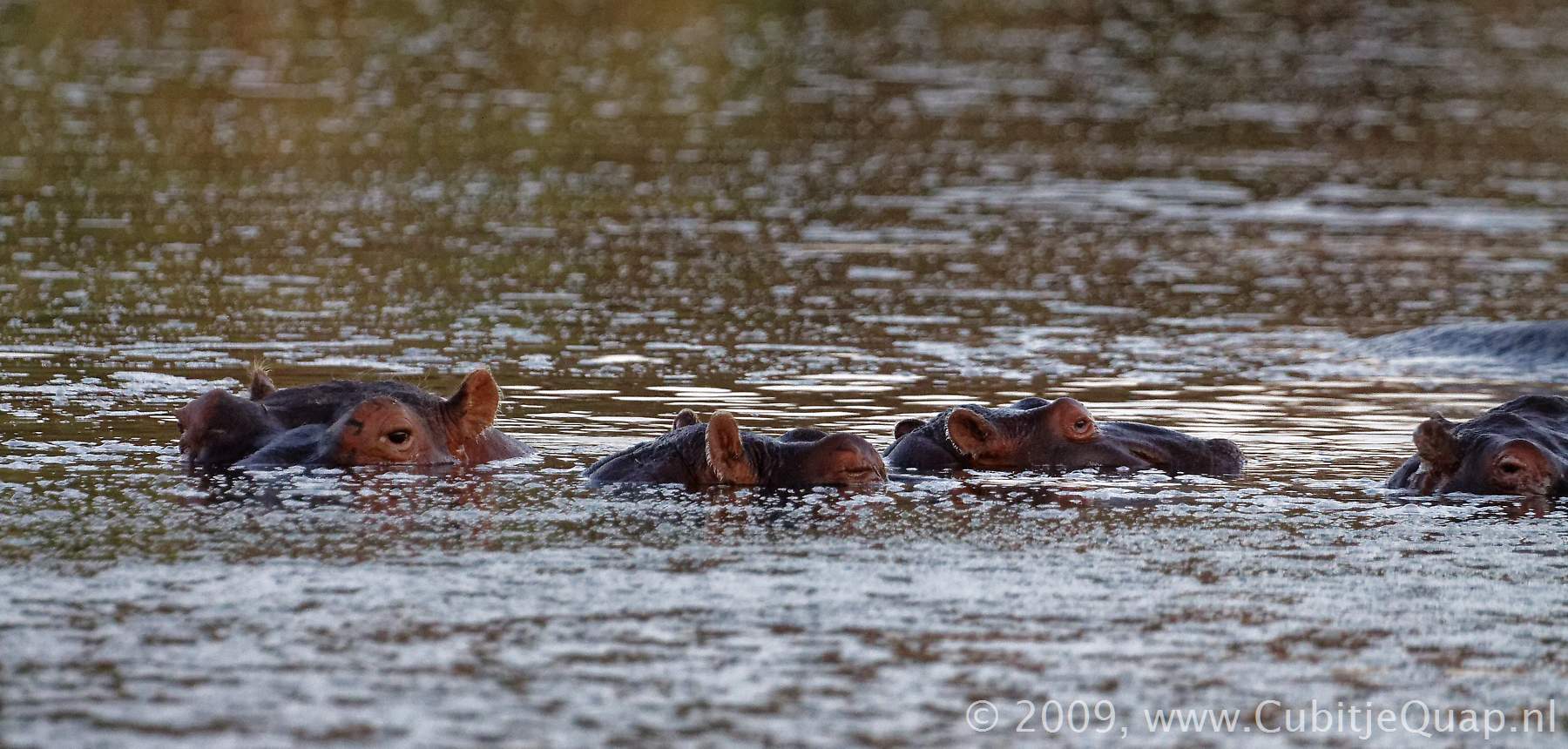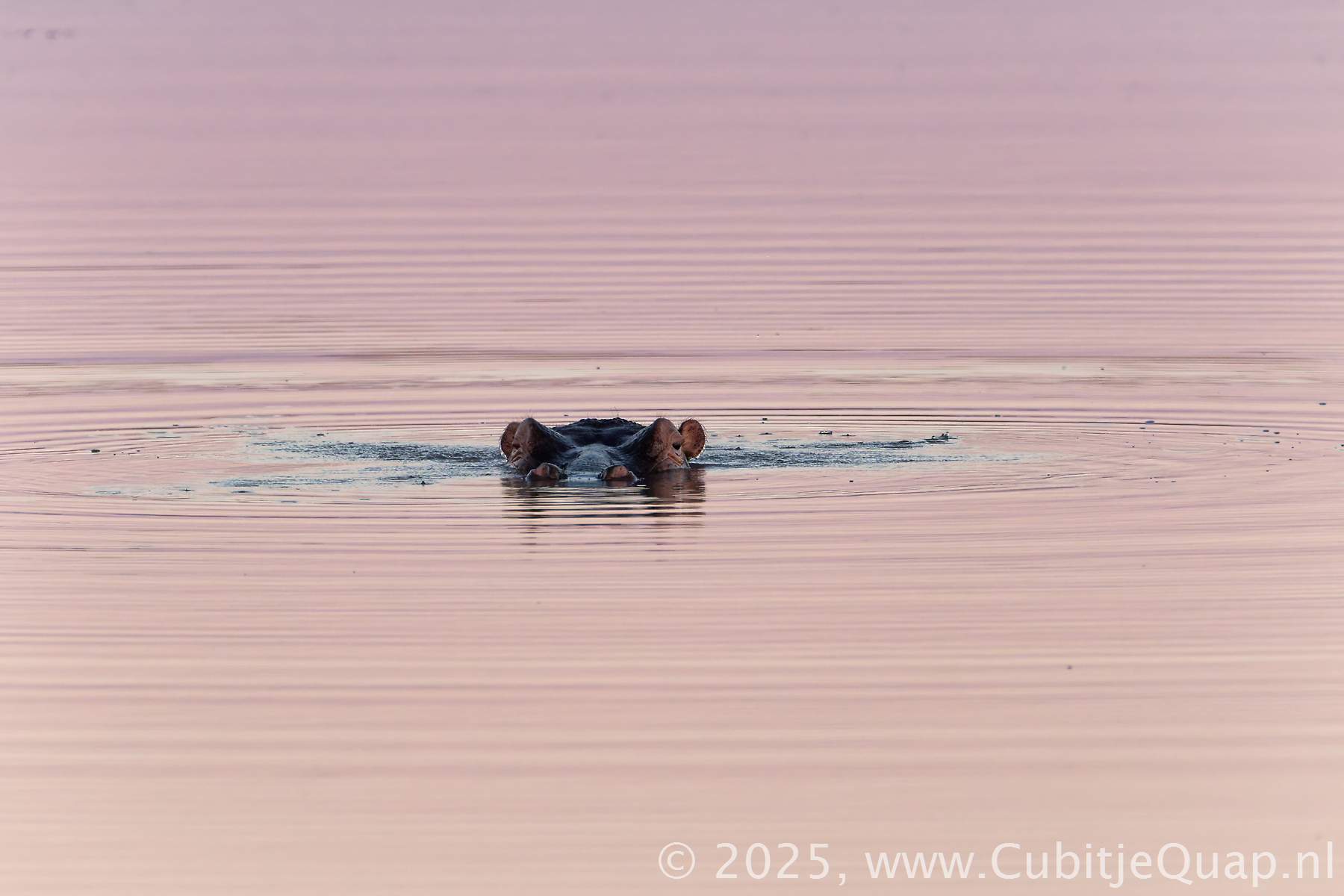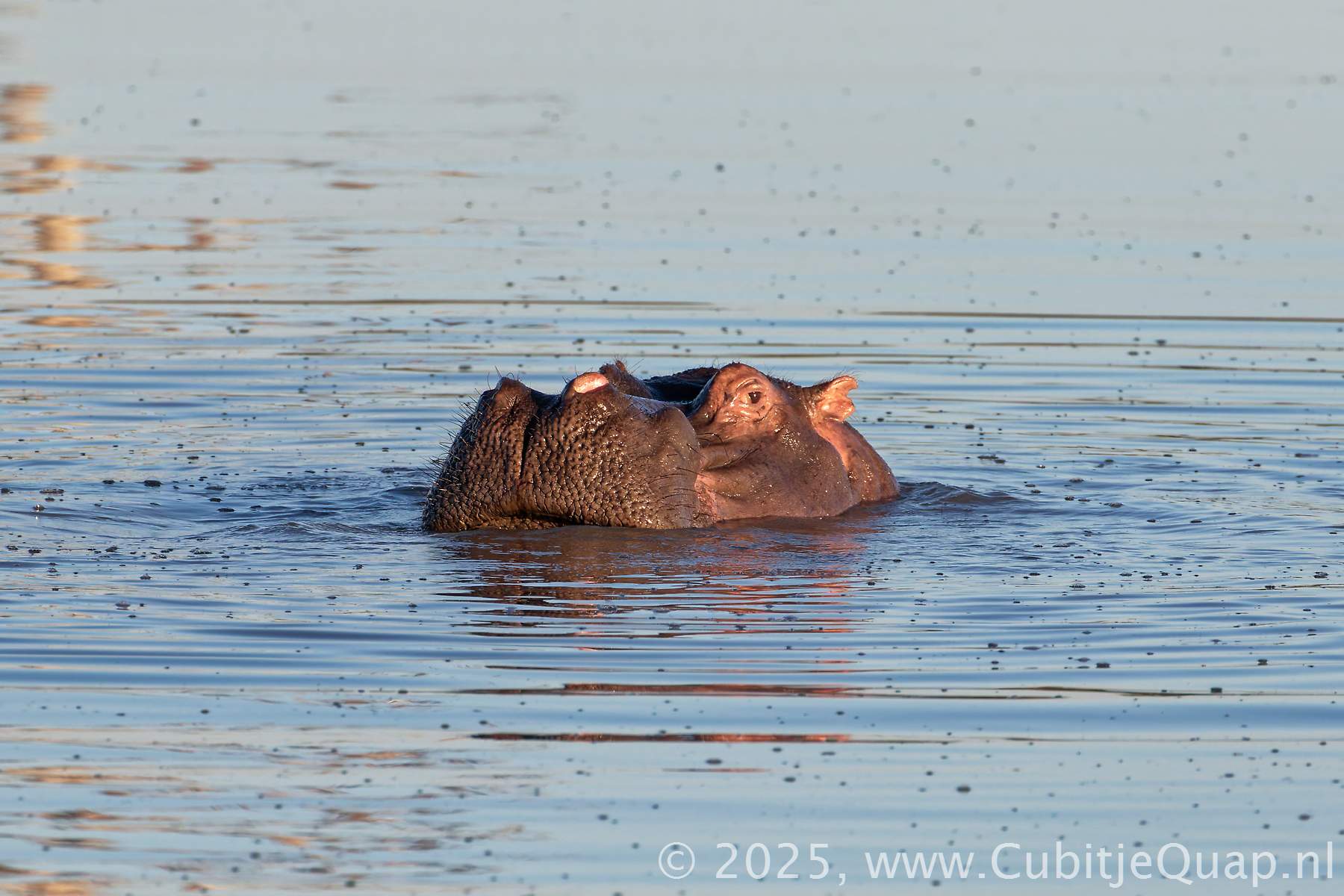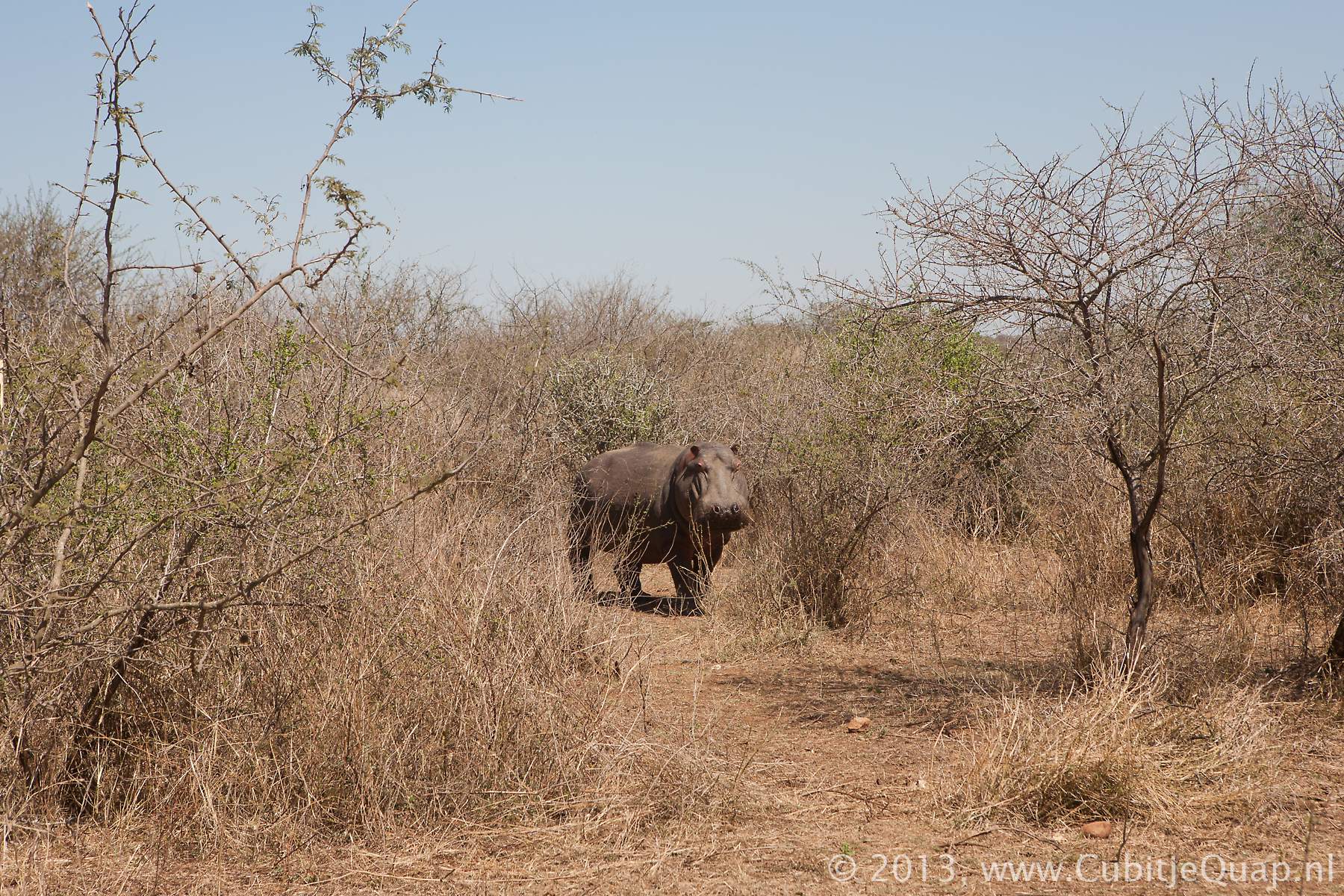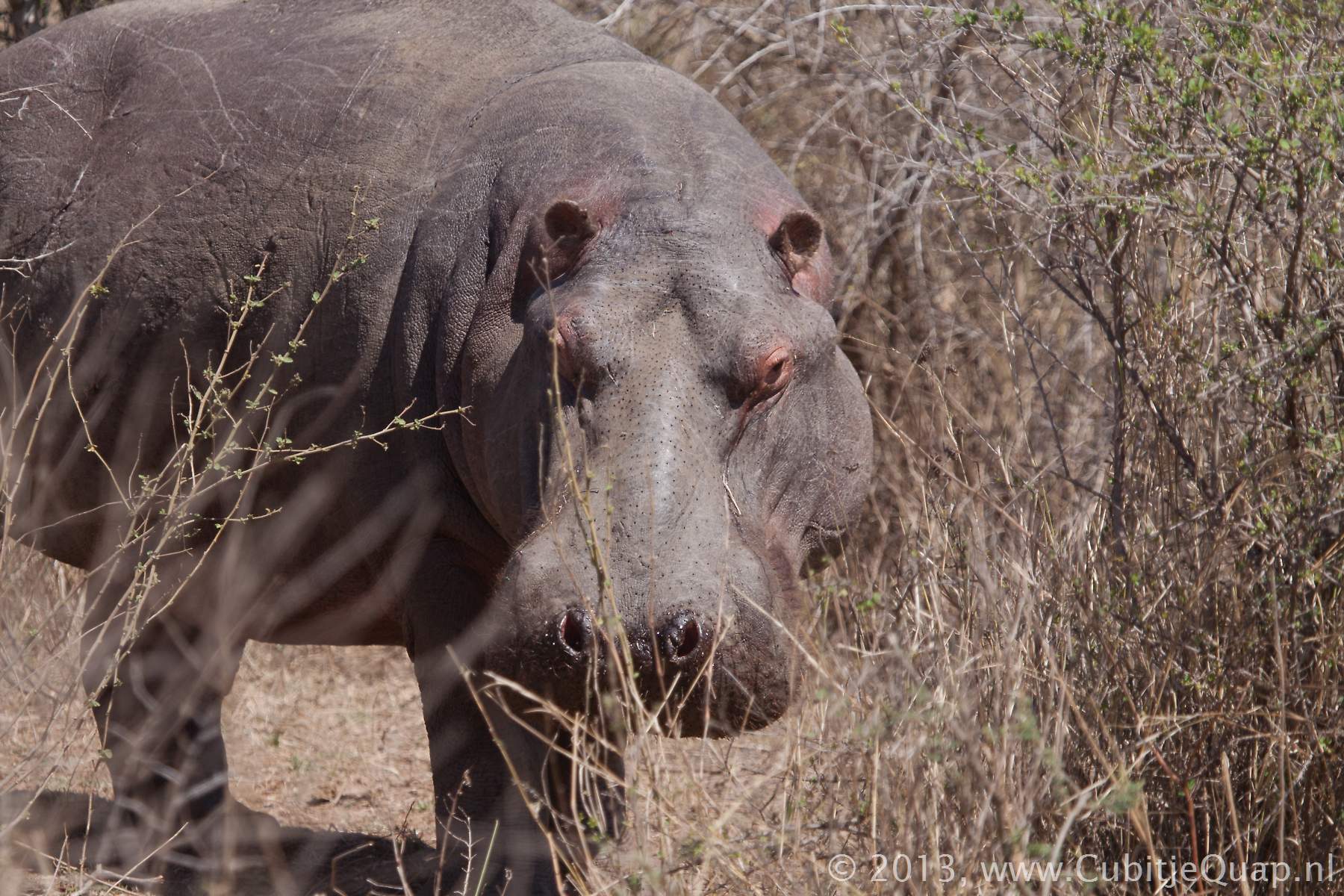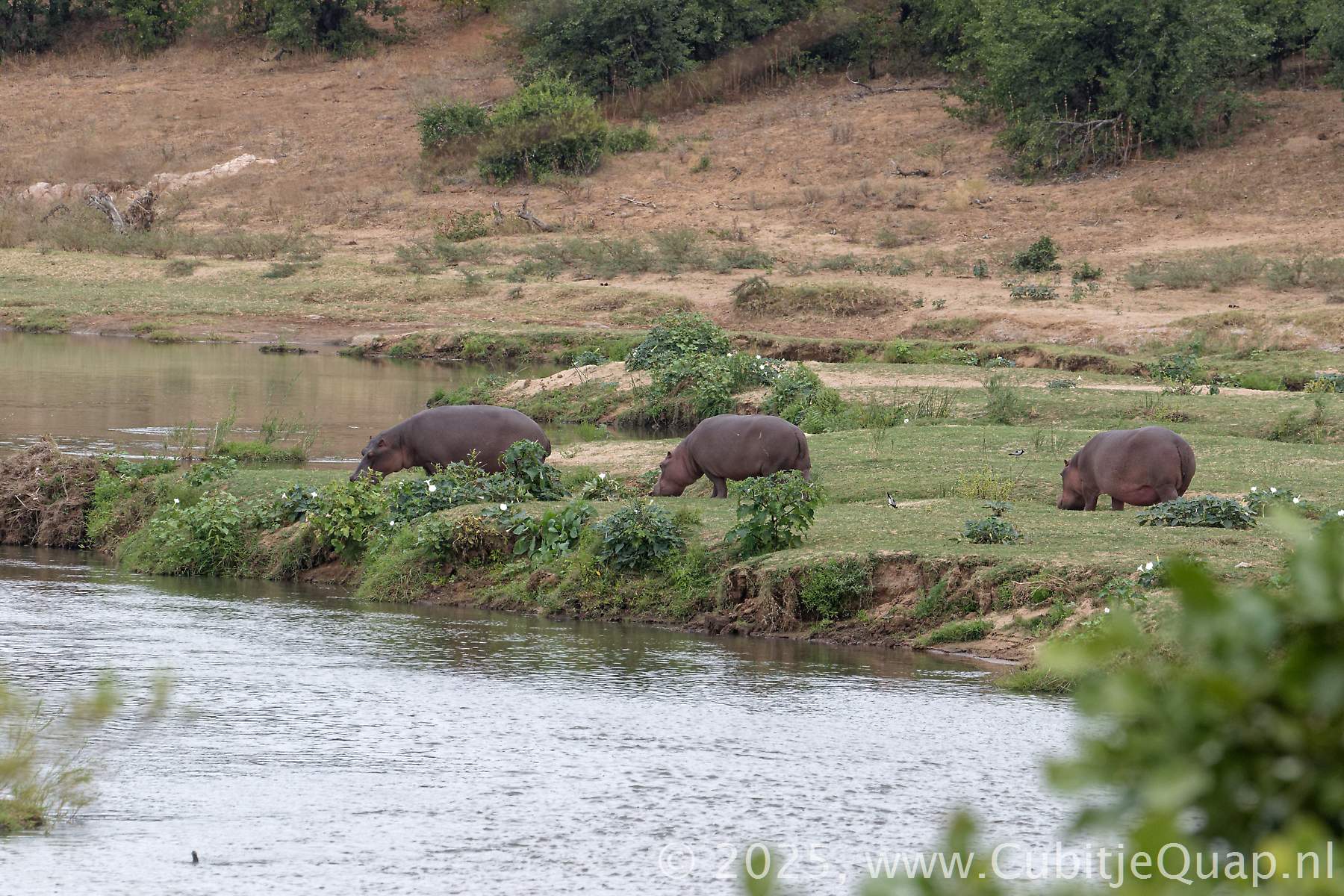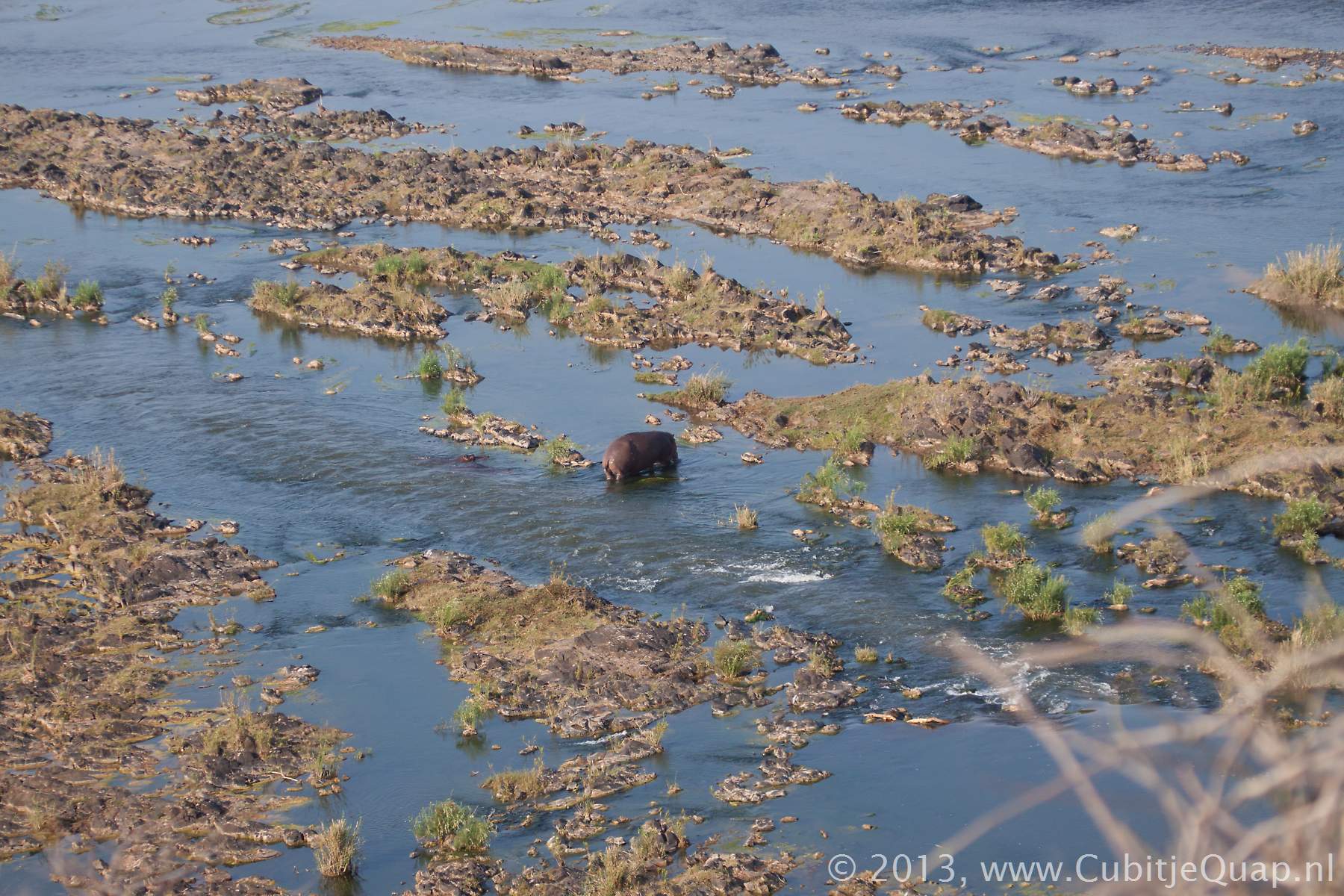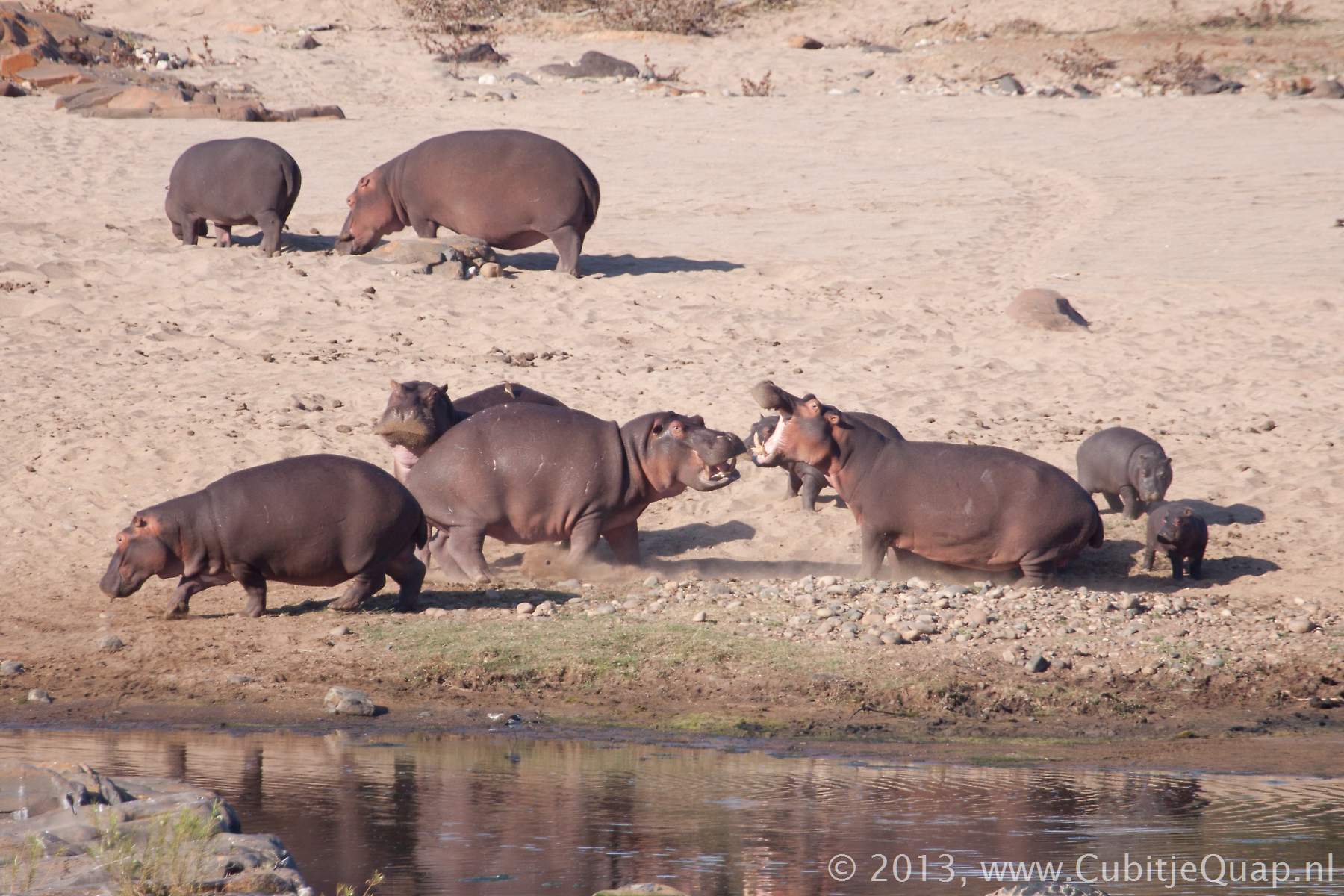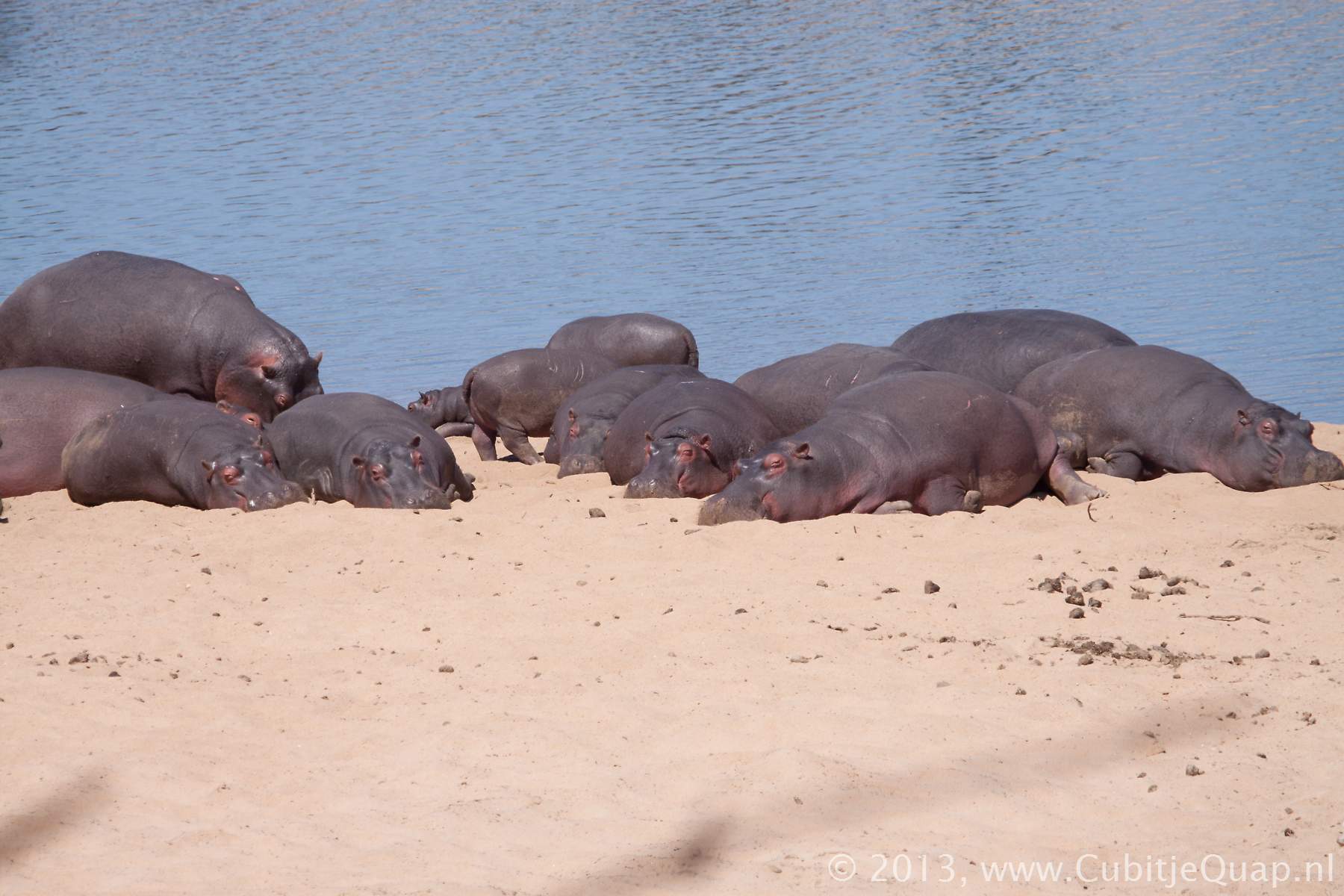Hippopotamus
Appearance
Bull: Shoulder height 1,5 m; tail 40 cm; mass 1000 - 2000 kg
Cow: Shoulder height 1,5 m; tail 40 cm; mass 1000 - 1700 kg
The hippopotamus is large in size with a barrel-shaped body and short legs, it has a massivehead with broad muzzle and it stays in water by day.
Large, rotund animal with smooth, naked skin, short, stocky legs and a massive, broad-muzzled head. Mouth equipped with an impressive set of tusk-like canines and incisors. Short, flattened tail is tipped with a tuft of black hair. Body colour greyish-black with pink tinge at the skin folds, around eyes and ears, while underparts are pinkish-grey. Four-toed feet leave a characteristic track.
Habitat
The hippopotamus requires sufficient water to allow submergence and a preference is shown for permanent waters with a sandy substrate. This includes rivers, dams and lakes.
Behaviour
this semi-aquatic animal spends much of the day lying in water, it emerges at night to move to feeding grounds. It also lies up on sand or mud banks in the sun, particularly during the winter months. It normally occurs in schools or herds of ten to fifteen animals, larger groups and solitary bulls are not uncommon. Schools are usually composed of cows and young of various ages with a dominant bull in overall control. The territories are narrow in the water but broaden out towards the feeding grounds. Dominant bulls mark their territories by scattering dung with a vigorous sideways flicking of the tail onto rocks, bushes and other objects.Territoriality is appearently strongest closer to the water but virtually absent in the feeding grounds. Fixed pathways are used and these are characterized by a 'double' trail - each one made by the feet of one side. Exceptionally, up to 30 km may be travelled to feeding areas, depending on the availability of food. An adult hippopotamus can remain under water for up to 6 minutes. Skin glands secrete a reddish fluid which is frequently mistaken for blood but probably acts as a skin lubricant and moisturizer. The hippopotamus is extremely vocal and its deep roaring grunts and snorts constitute one of the typical sounds of Africa. Provoked, it can be extremely dangerous, particularly solitary bulls and cows with calves.
Food
The hippopotamus is a selective grazer. Considerable damage can be done to grazing areas near water.
Interesting links
Wikipedia

